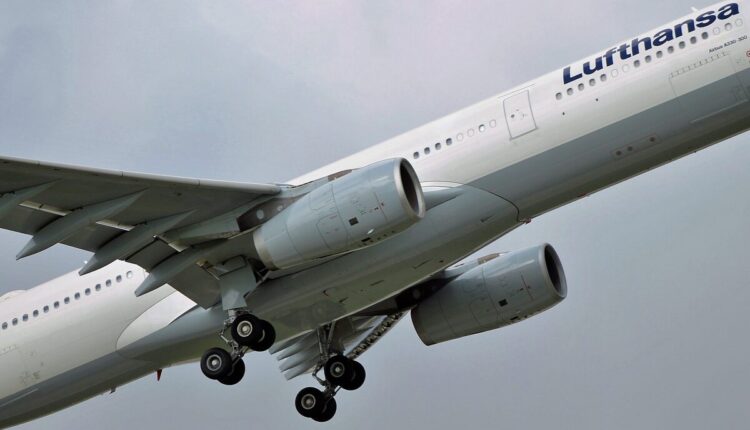From Blueprint to Takeoff: A Study on Modern Aircraft Engineering
Flight is a marvel of human intellect and constant invention, as seen by the elegant outlines of airplanes flying through the blue sky. From the tiniest drone to an enormous airliner, each flight involves cutting-edge technology, complicated engineering, and solid science. Initial ideas on an engineer’s drawing board led to numerous design iterations and simulations to create such a wonder. Every part is essential while building the airplane, from the wing’s curvature to the engine’s scream. This delicate choreography culminates when those roaring engines force the aircraft aloft, converting dreams and calculations into flying reality.
Conceptualization: Imagining the Skies
Every aircraft begins its journey in the realm of imagination, conceived as a response to a distinct need or challenge. Whether the demand stems from the sectors of commercial travel, cargo logistics, or stringent military applications, a team of designers and visionaries come together to conceptualize a machine tailored to fit those exact parameters. Armed with modern tools, engineers employ cutting-edge 3D modeling software, transforming abstract ideas into tangible, visual prototypes. These virtual simulations enable them to delve into the minutiae, exploring the prospective aircraft’s size, payload capacity, aerodynamic properties, and myriad functionalities. This blend of creativity and technology ensures that the initial vision evolves systematically, culminating in a well-optimized, purpose-built aircraft ready to take to the skies.
Aerodynamics: Crafting for the Clouds
The shape and design of an aircraft are not merely aesthetic choices; instead, they are profoundly influenced by the principles of aerodynamics. Engineers and designers meticulously study airflow patterns over various surfaces, understanding how different shapes affect the balance between lift generation and drag forces. The insights from these studies guide refinements in the aircraft’s structure and design elements. This rigorous attention to detail ensures that the final product achieves optimal performance in flight, whether it’s maintaining stability at cruising altitudes or exhibiting adept maneuverability in the face of unpredictable weather challenges. In essence, the harmony between form and function in aircraft design culminates in a machine capable of safe, efficient, and reliable flight.
Structural Integrity: Strength in the Skies
An aircraft’s integrity is constantly tested by its wide array of conditions, ranging from the unpredictable vagaries of turbulent weather to the substantial physical stresses experienced during takeoff, cruising, and landing. To navigate these challenges, the choice of construction materials becomes paramount. High-tech materials like titanium alloys and carbon-fiber composites are often favored because they deliver the required structural strength without adding undue weight, a crucial balance in aviation. Engineers employ Finite Element Analysis (FEA) tools to ensure these materials can withstand the rigors of flight. These sophisticated computational tools simulate various scenarios, allowing engineers to anticipate and understand how selected materials will react under different stressors, ensuring the aircraft’s durability and safety throughout its service life.
Propulsion Systems: The Heart of the Machine
Modern aviation showcases human creativity with various propulsion technologies, from propellers to turbojets. Engineers must ensure the engines generate enough power to fly the aircraft while optimizing fuel economy, which affects operating costs and environmental effects. Recent aviation developments have refined propulsion mechanics and explored sustainable fuel sources to lessen the industry’s carbon impact. Advancements in materials, combustion technology, and aerodynamics push engine performance further. Thus, modern aircraft engines are more powerful, efficient, and eco-friendly.
Avionics: The Brain Behind the Operation
In the intricate ecosystem of modern aircraft, the suite of advanced electronics, collectively referred to as avionics, plays a pivotal role. These sophisticated systems, embedded throughout the helicopter, govern various functions ranging from navigation and communication to the real-time monitoring of aircraft subsystems. These avionic components must be reliable and integrated with the latest technological advancements. Their primary objective is to enhance a pilot’s situational awareness, streamline operational tasks, and ensure a continuous flow of critical real-time data throughout the flight. In essence, avionics’ seamless integration and functionality are fundamental pillars supporting the safety and efficiency of contemporary aviation.
Hydraulic Systems: The Lifeline of Flight
The hydraulic systems within an aircraft serve as its lifeline, enabling precise control and movement of critical components. This includes the extension and retraction of landing gear, the manipulation of flaps and slats, and even the direction of flight control surfaces such as ailerons and elevators. The efficiency and reliability of these systems hinge on the quality and condition of the aircraft hydraulic fluid, a specially formulated synthetic compound. This fluid is the medium for transmitting power within hydraulic systems, ensuring smooth operation across diverse temperatures and pressures while resisting oxidation and corrosion. Regular maintenance is essential to meet stringent aviation standards, preventing potential failures due to fluid contaminants or degradation.
Conclusion
The voyage from an aircraft’s initial design to its maiden voyage is a testament to human ingenuity and technological advancement. Through rigorous engineering processes, continuous testing, and an unwavering commitment to safety, modern aircraft are symbols of humankind’s perpetual quest for exploration and connectivity. Soaring through the heavens, these engineering marvels underline the symbiotic relationship between innovation and the age-old dream of flight.
Read also: Doha, Qatar’s Capital, is a City That Stands on the Ground and Touches the Sky

